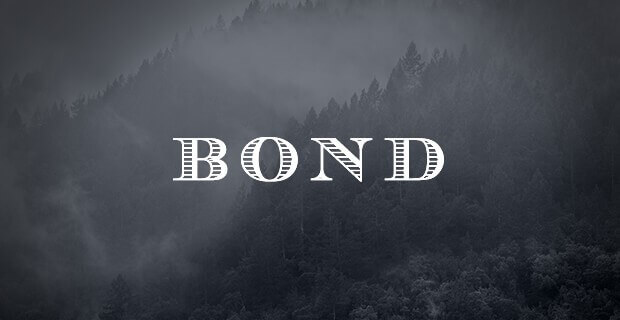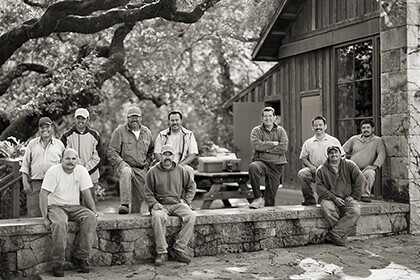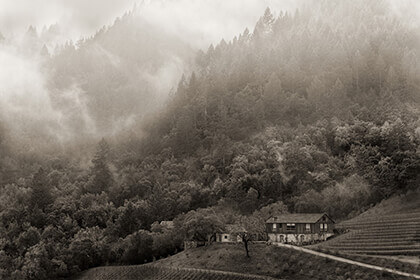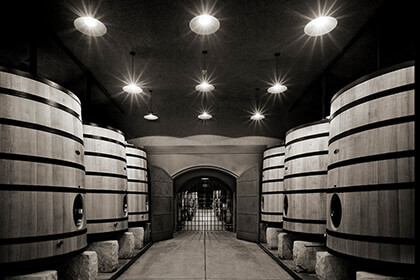Bond Wines
The philosophy of BOND, founded by California vintner H. William Harlan, is to offer wines from vineyards that highlight very specific sites in Napa Valley. William Harlan, owner of Harlan Estates...Read More
BOND Estates | A Tale of Five Great Napa Terroirs
2017 marked the 20th anniversary of BOND estates project designed by influential Napa Valley vintner Bill Harlan to showcase the incredible versatility of the Cabernet Sauvignon grape, the most popular variety in Napa Valley’s great terroirs. The estate’s five distinct sites are beautifully represented by five premium wines, each expressing a unique personality and profile derived from its place of origin.

The Beginning of BOND Estates
The story of BOND Estates is the story of famous California vintner Bill Harlan. In 1983, Harlan founded Merryvale Vineyards in collaboration with his real estate partners. He appointed Bob Levy as winemaker, and later took on Swiss businessman Jack Schlatter as an additional partner. The first wines of Merryvale were made at the nearby Rombauer Vineyards winery, until Harlan constructed a new winery in St. Helena, just in time for the 1989 vintage. In 1984, Harlan began expanding his vineyard holdings with the purchase of a 40-acre plot near Oakville. This property would one day become the legendary Harlan Estates. Over the course of the next few years, he added 200 acres to this property. Initially sourcing fruit from 60 local vine growers, Harlan eventually declassified his own fruit and began producing a wine named Oakville Grade. This wine was later renamed The Maiden and made availed under the Harlan label.

Following a period of great success, the owners of Merryvale bought out Harlan, who invited the vineyard owners to become part of the BOND project. The inaugural 1997 vintage of BOND was vinified in the Harlan Estate's winery, alongside the Harlan flagship cuvee. Just 3 years later and just in time for the 2000 harvest, a brand new winery was constructed and fully dedicated to the wines of the BOND project. Over time, the brand portfolio expanded to include five wines, each vinified separately from five different vineyards, which Harlan calls “the grand crus of Napa.”
BOND Estates: Five Grand Cru Terroirs of Napa
The five single-vineyard and single-variety Cabernet Sauvignon wines in the BOND Estates portfolio come from five signature sites, each located on a hillside in California’s Napa Valley. The vineyards are quite small, between 7 and 11 acres in size, and each one produces between 450 to 600 cases per year. Although BOND Estates maintains complete viticultural control over these parcels (the winegrowing directed by Bob Levy), the company does not own them. Instead, the fruit is purchased under "evergreen contracts," which are renewed on a yearly basis. To understand the personality of these five flagship cuvees, it is important to first get to know the landscapes from which they come.
- Melbury: The Melbury vineyard was first planted in 1991 and today includes 7 acres of hillside, north of Lake Hennessey. The south-southeast-facing vines of Cabernet Sauvignon are planted between altitudes of 400 and 500 feet above sea level and rooted in predominantly clay-based soils. The wines produced from this site have become well known for their elegance, offering rich spice and violet aromas on the nose. These Cabernets offer a certain charm and liveliness, lacking the density associated with wines from low altitudes.
- Pluribus: Extending over 7 acres, the Pluribus vineyard is planted between altitudes of 1,100 and 1,300 feet above sea level on the slopes of Spring Mountain. The Cabernet Sauvignon vines here enjoy a mix of north, east and southeast exposures, and are planted in a volcanic bedrock. The property is surrounded by a conifer forest, which lends a subtle cedar fragrance to the finished wines. Meanwhile, the shade cast over the vineyard in the afternoon yields racy tannins and a nice acidity.

- Quella: The Quella vineyard spans over 9 acres. The Cabernet Sauvignon vines seen here today were planted in 1991 on the eastern hills overlooking Napa Valley. They enjoy a southwest exposure and an ideal location on a riverbed, where the soil contains cobble and rocks, along with pockets of tufa (a type of volcanic ash). The vineyard is situated at altitudes of between 433 and 595 feet above sea level. This plot has the lowest grape yield among those in the BOND portfolio, producing wines with fantastic structure and a signature salinity.
- St. Eden: Planted in an iron-rich, rocky soil, which resulted from a landslide on the Vaca Mountains, the St. Eden vineyard is planted at elevations between 145 to 188 feet above sea level, making it the lowest of the five BOND sites. The vines face north, produce wines with great precision, high acidity and a generous, lush concentration of flavours.
- Vecina: The Vecina vineyard includes 11 acres, and the Cabernet Sauvignon vines are planted just southeast of the BOND winery, hence the name “Vecina,” meaning "neighbor" in Spanish. The vines grow at an altitude of between 221 and 330 feet above sea level, on terraced slopes of volcanic soil. The thermal amplitude, brought about by the cool nights and hot afternoons, results in wines that are beautifully layered, with a high concentration of tannins and colour. These precious Cabernets are meant to be kept, evolving very nicely in the bottle over time.
Mary Maher joined the BOND team in 2001, taking over from David Abreu as BOND’s new in-house vineyard manager. Under her leadership, the team has adopted various techniques to grow grapes in a way that encourages the most genuine expression of terroir. These techniques include "crimping" the grass (cutting it in a certain way) to prevent it from absorbing too much water. This reduces the temperature of the soil and preserves moisture. Maher also introduced biodynamic mulch with which to nourish the soil’s microbiological ecosystem. Irrigation has gradually been phased out, resulting in a greater maturity of tannins and flavour in the finished wines. Dry farming has also encouraged the development of the vine root systems.
Winemaking at BOND Estates
The Cabernet Sauvignon wines included the BOND portfolio are produced in a way to most clearly showcases each terroir of origin. At the BOND winery, the grapes undergo spontaneous fermentation (mostly in barrels), at temperatures of 78 to 82° F. The team carries out four pump-overs per day, along with some punch-downs during the peak of the fermentation process. The maceration is long, allowing for the greatest extraction of natural colour and tannins from the skin, while the length of the post-fermentation maceration depends on the personality of each plot in a given vintage.

The grapes of each property are picked in batches, with the timing of the harvest depending on levels of ripeness. These batches are vinified separately and then matured in oak barrels (almost all new, from Taransaud, Darnajou and Sylvain). The base wines are blended to produce the final wine. While 60% of the grapes harvested from the 5 BOND sites are used to produce the estates 5 wines, 20%-25% is sold in bulk. The remainder goes into a special blend named BOND Matriarch.